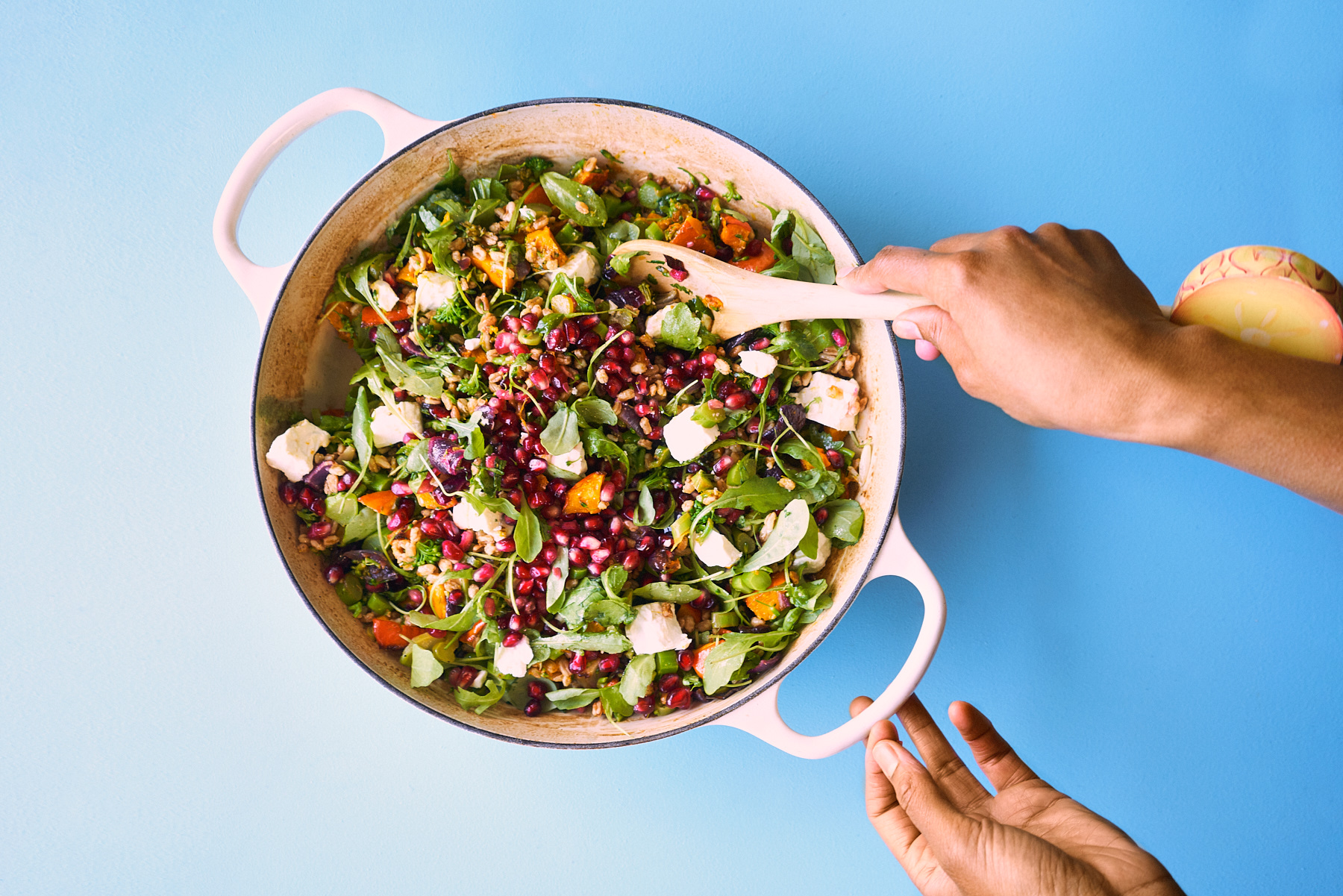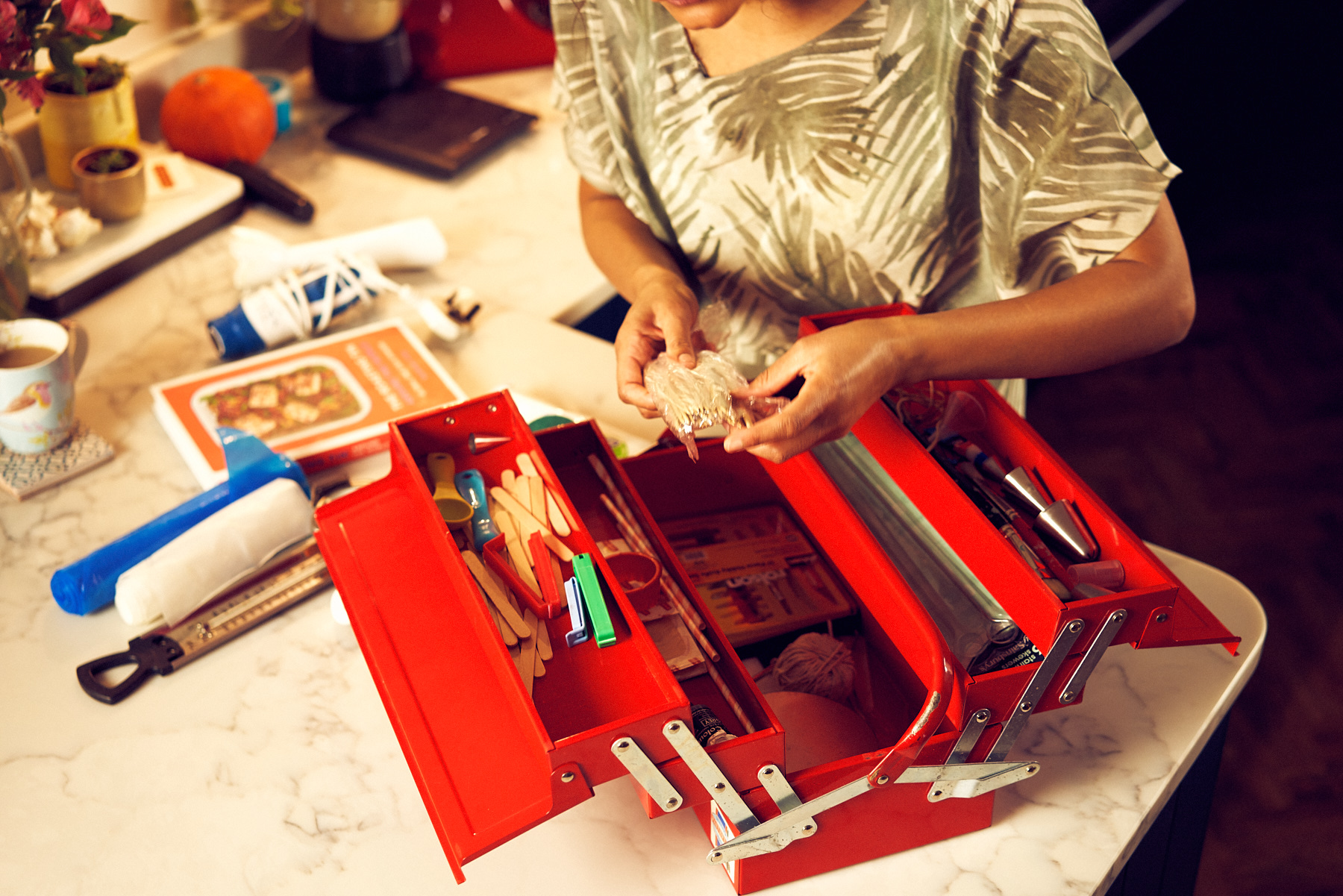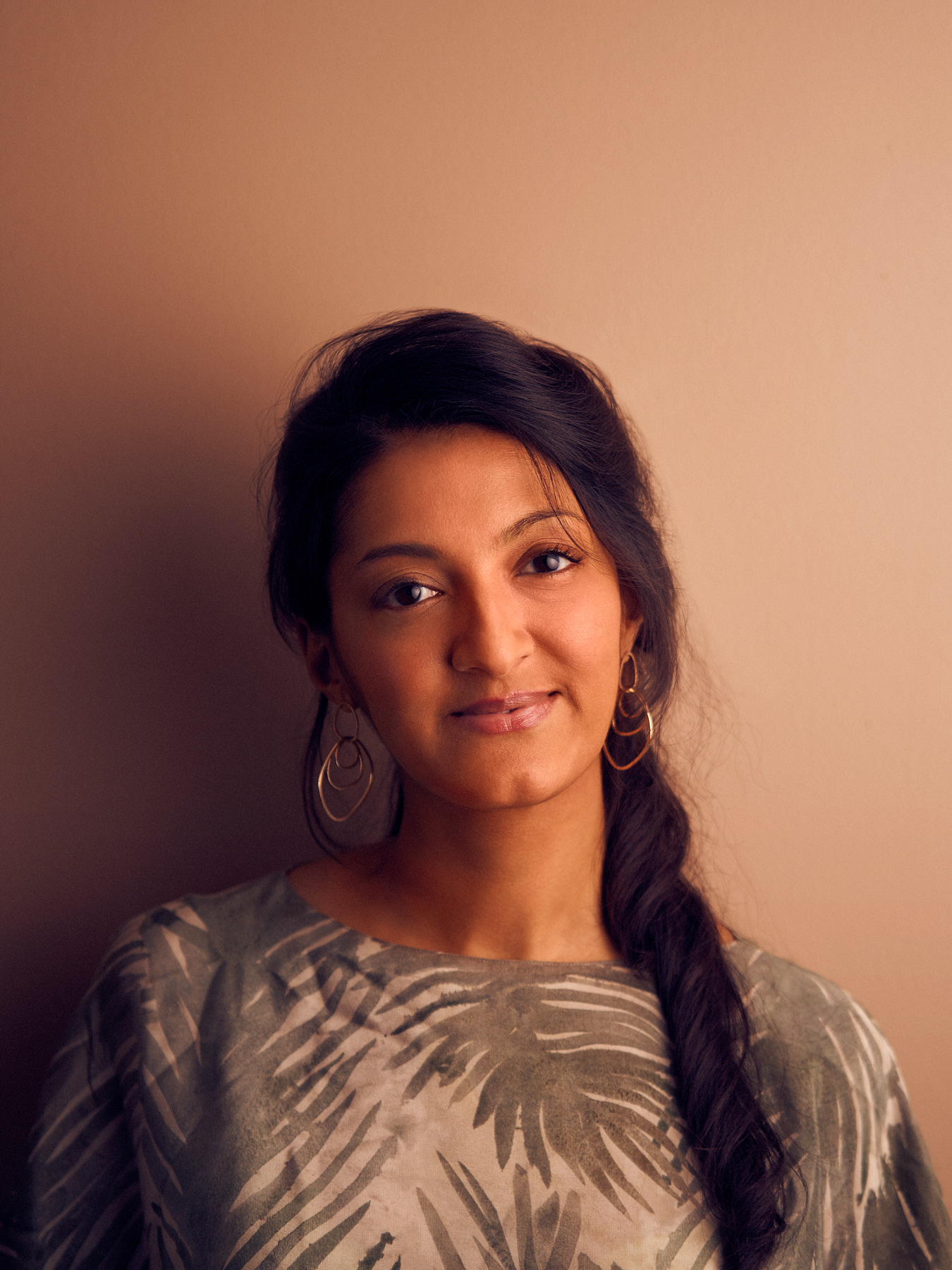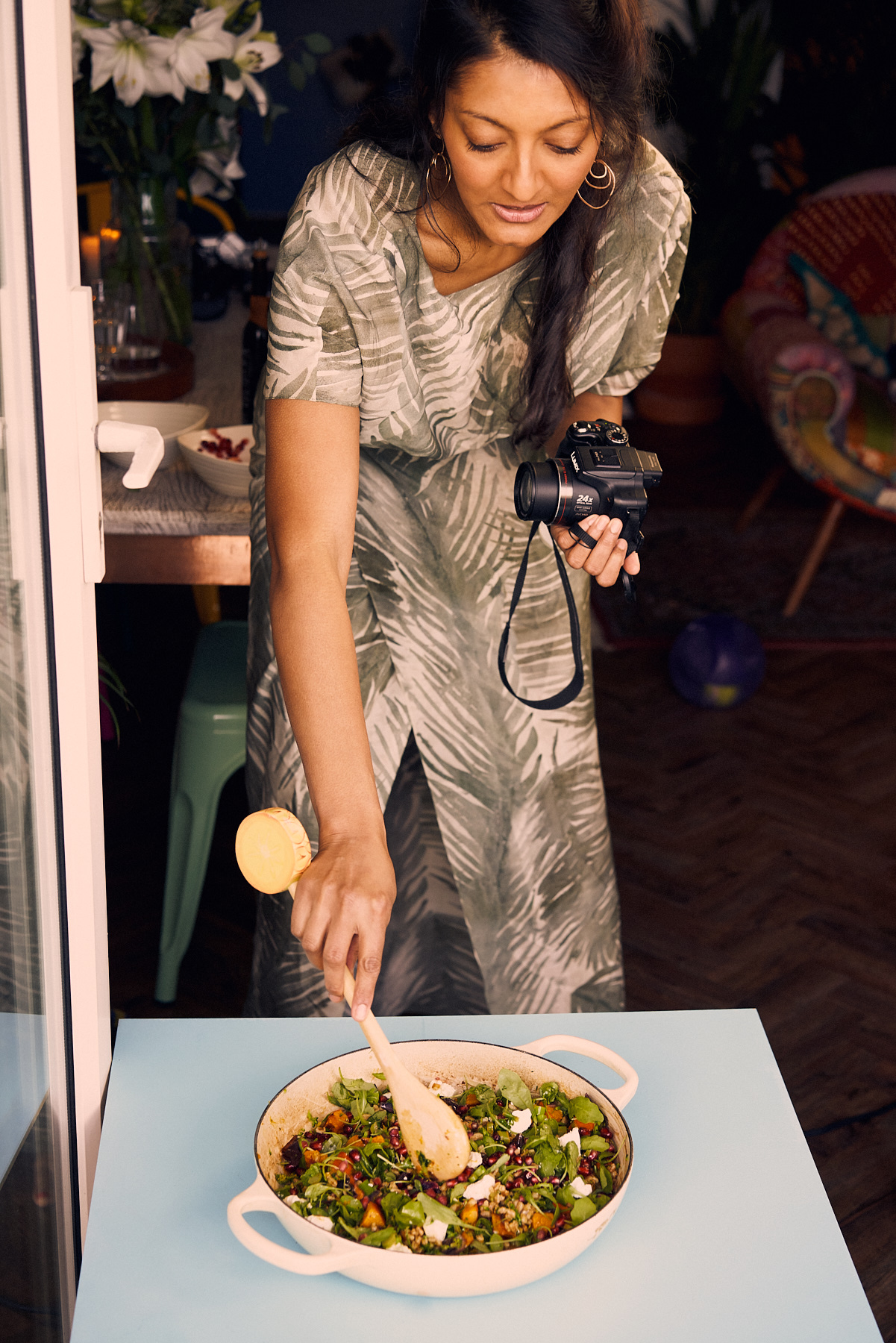
- Home |
- Search Results |
- How a revolution in food styling changed what we see in cookbooks
How a revolution in food styling changed what we see in cookbooks
Photographs in cookery books used to be about secret tricks. Today, they inspire rather than intimidate. Here food stylists tell Penguin.co.uk how their profession learnt to relax – thanks to Instagram, Jamie Oliver and the humble roasting tin.
Imagine a food photography shoot, and you might expect some kind of low-level special effects: WD-40 sprayed covertly onto pastry; suncream being poured into cereal bowls, unused tampons being whipped out of boiling water, steaming. “That’s quite a common misconception,” says Rukmini Iyer, author of the phenomenally successful Roasting Tin series and food stylist. “That notion of smoke and mirrors, that the food’s not edible? It’s definitely not been the case for years.”
There has been a quiet revolution in our cookery books over the past 20 years, away from the stiff precision of nouveau cuisine and towards accessible, delicious food that you just want to cook – like, right now. And alongside the authors who conjure up these recipes, it is food stylists leading the change by setting trends for how our dinners look.
According to Frankie Unsworth, author of The Art of New Cooking and stylist for chefs including Nadiya Hussain and Rachel Khoo, there have been two main factors in this move towards more authentic food styling: digital photography, and Jamie Oliver.
'Jamie tried to make food styling a bit more real and to make people more honest about what the end result was going to look like'
“Jamie was ground-breaking in how he plated stuff. He would use his hands a lot: tossing leaves in the dressing and then piling them on a plate. Jamie tried to make food styling a bit more real and make people more honest about what the end result was going to look like. That was one of the turning points.”
“When you were shooting analogue photography, you would only know what the shots were like once you’d printed them,” says Iyer. “You couldn’t shoot, look at the photograph on a laptop, tweak, and shoot again. So the food was on set all day, sweating in the light. Now, if the food looks good, it’s because it is good – it’s just come out of the oven or off the hob.”
That crucial shift – in setting something up to look fresh and delicious, versus photographing fresh and delicious food – has also brought chef and reader closer together. “I’m always pleased when people post pictures of things from The Roasting Tin books and say, ‘It looks like the picture!’” Iyer tells me. “It should look like the picture because it’s achievable and I haven’t ‘tricked’ you; this is how it looked when it came out of the oven when I did it.”

Still, Iyer and Unsworth nevertheless have some insider hacks up their sleeves. Vegetables, such as green beans, are often arranged underdone or even cold, fresh out of being “shocked” in ice-cold water to keep them looking as bright as possible. When I grill Unsworth on an unfeasibly looking perfect avocado half in her work, she admits that it’s easier to “manipulate” underripe ones. Mostly, it’s about being meticulously prepared: along with the best greengrocers in town, Unsworth has a “mental rolodex” of fruit trees in her South London neighbourhood that she can harvest from to get fruit still with their leaves intact.
Iyer talks about serving up the perfect ball of ice cream for a recent film shoot in the desert. “I froze them for 24 hours in a chest freezer, and then had to steal, borrow, beg an ice box from the props dept. But we only had two plates. Every time there was a new take I had to grab the plate off Matt Smith, wash it down as quickly as possible, then put a fresh scoop on, then run back in. And then the director wanted some ice cream.”
What a lot of people don’t realise about food stylists is that they are the ones cooking the food as well as just arranging it. “We’re not just spending hours being really finickity over one single image,” Unsworth says. “We probably cook around eight or nine dishes for shots a day, and that could end up being more recipes than that, because often you’re combining two recipes in one image. It’s a very fast-paced job in the same way that cheffing is.” That can often mean balancing a wide range of cuisines – from the Michelin-starred perfection of Michelle Roux Sr to the at-home comfort of a pasta dish – as well as knowing how to make them look good.
'You want things to be a little messy, a bit off. A bit of black pepper on the table, it adds to the home-made look of it'
But while chefs aim to send a plate out looking perfect, food stylists must make it look enticing. “One of our jobs is to dumb down the food and make it look a little more broken into or as if it has been plated by someone who is not a trained chef,” says Unsworth. “You don’t want it to be so hard that you’re put off just by looking,” says Iyer. “You want things to be a little messy, a bit off. A bit of black pepper on the table, it adds to the home-made look of it.”
If digital photography changed food styling behind the scenes, the rise of the smartphone, social media and lifestyle blogging gave this secretive career a new platform. Unsworth stumbled upon the notion of professional food styling after working as a writer on a food magazine and training at Le Cordon Bleu in Paris. “Now, people come to me and say, ‘I want to be a food stylist’, but I definitely just realised it was a thing and saw how exciting it looked and tried to pursue it.” Iyer, too, discovered the industry after creating content for her food blog “and realising I should get someone else to take the photos”. She admits interest in the industry has grown: “I’ve had people write to me asking how they can get into styling.”

Some chefs and photographers have capitalised on this, making their skills as accessible as the recipes look through food styling and photography workshops, aimed specifically at those just using iPhones or with no previous experience. But cookery books remain the lodestar of where food styling can really transport us. Shoots for cookery books can last anywhere between six and 12 days and can involve an enormous team of people, from prop stylists (who work with the food stylists on the best plates, bowls, flowers and other background objects to create a mise en scène) to art directors, designers and photographers – as well as the chefs and writers themselves.
And as for what makes for the best-looking books? Unsworth admits it’s “such a personal thing” but says that “the ones that make me want to cook have a sense of place and time.” Like any good book, a well-styled and thoughtfully written recipe book can make you hungry and take you places, she says: “I like the ones that tell me a story”.

What did you think of this article? Email editor@penguinrandomhouse.co.uk and let us know.
Image: Stuart Simpson/Penguin